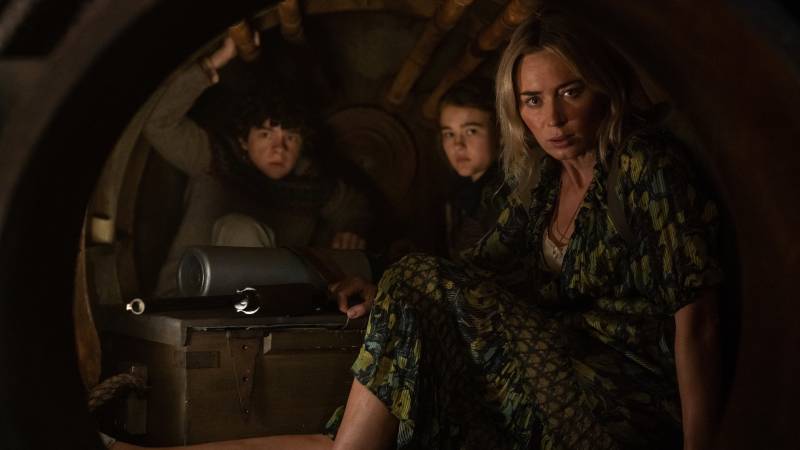It helps that the Abbotts are fluent in American Sign Language since their oldest child, Regan, is deaf—as is the actor who plays her, the remarkable Millicent Simmonds. As in the first film, Regan emerges as the story’s truest hero: She’s tough, courageous and determined to help as many other people as she can. Less eager to take action is her traumatized younger brother, Marcus, heartbreakingly played by Noah Jupe.
Eventually the Abbotts take temporary shelter in an abandoned steel factory where they reunite with an old family friend, Emmett, played by a grave Cillian Murphy. Emmett is grieving the loss of his family and has become deeply cynical about humanity, at one point saying, “The people that are left … they’re not worth saving.” Regan disagrees; not only are people worth saving, she says, but if enough of them join forces, they might be able to fight back against the aliens.
The movie seems to think they both have a point. As Regan and Emmett embark on a perilous journey in search of survivors, they find themselves in situations that give rise to both hope and despair. Some of the people they meet are as predatory as the monsters; others are as brave and compassionate as Regan. That makes A Quiet Place Part II an unexpectedly resonant film for the present moment as this country slowly emerges from a crisis that—while surely less terrifying than an alien apocalypse—has revealed humanity at its best and its worst.
The movie ends on an inconclusive note, leaving the door open for another sequel, which is both frustrating and heartening. I’m already looking forward to finding out what happens next—hopefully in a dark theater, watching as quietly as I can.
Copyright 2021 Fresh Air. To see more, visit Fresh Air.9(MDAxOTAwOTE4MDEyMTkxMDAzNjczZDljZA004))

9(MDAxOTAwOTE4MDEyMTkxMDAzNjczZDljZA004))

